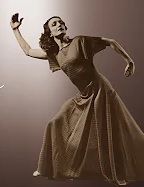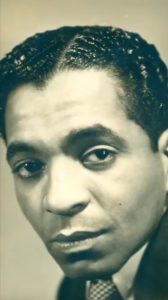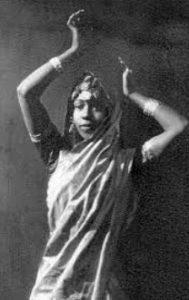Dancers from the Denishawn school began to branch out as they grew restless with the company’s artistic vision, which focused on exotic themes that proved to be more so entertainment on the vaudeville circuit. Instead, the first-generation dancers wanted to express their creative voice and push the art form’s boundaries, resulting in various codified modern techniques.

Martha Graham studied dance at Denishawn but left to form her own company and develop her own technique. She believed that dance should show the struggle and pain that comes with life. She developed “contract and release,” a technique that shows movement initiating from the center of the body meant to embody conflict. This technique involves percussively tightening the body’s core muscles (centered on the lower abdominals and pelvis), followed by a release of tension (the spine lengthens to return to an elongated neutral posture). This technique utilizes breath to support the movement; the dancer begins with an inhale, then an exhale, allowing the body to contract, lastly followed by an inhale to release and return the body in vertical/neutral alignment.
Graham’s repertoire included dances based on Americana, such as Frontier and Appalachian Spring, she also created dances based on Greek myths as in Night Journey, and emotional dances.
Watch This
Lamentation is a signature solo performed by Graham. Graham embodies grief as she contorts her body within the stretchy fabric.

Doris Humphrey & Charles Weidman were former Denishawn students and had a creative partnership and together founded the Humphrey-Weidman company. In collaboration with Weidman, Humphrey created a movement technique based on the body’s reaction to gravity and weight called “fall and recovery.” Humphrey believed the body constantly moves in between the “arc between two deaths,” in which the body moves in a successive pattern responding to gravity.
Watch This
Weidman discuss the concept behind “fall and recovery.”

Lester Horton became interested in dance when he saw Native Americans doing indigenous dances. He is most renowned for his technique, called the “Horton Technique.” This technique embeds strength-building and flexibility principles through fortification exercises (set exercises designed to increase technical skills underpinned with anatomy principles).
Horton also had a company that is credited with founding the first racially integrated dance company in America. His choreography drew inspiration from Native American and African dance forms.
Watch This
students perform Horton Technique, working on flat back series that aim to strengthen and stretch the legs, core, and back.

(Osborne) Hemsley Winfield was an African American modern dancer that sought ways to create equitable opportunities for Black dancers. Winfield was inspired by the Harlem Renaissance, a cultural movement that brought African American artists to the forefront as changemakers. In 1931, he co-founded the Bronze Ballet Plastique with the help of Edna Guy, later to be renamed The New Negro Art Theatre Dance Group, which was the first African American modern dance company in the United States. Winfield also established a dance school to provide dance instruction. After Winfield passed away, The New Negro Art Theatre Dance Group dissolved due to a lack of financial support.

In 1924, Edna Guy was the first African American to study with Denishawn. However, due to the prevalent racial segregation, she was only able to perform for in-house recitals. She later co-founded The New Negro Art Theatre Dance Group alongside Hemsley Winfield. In 1937, Guy and Allison Burroughs staged Negro Dance Evening, highlighting African diaspora dances.